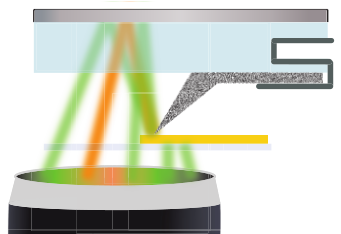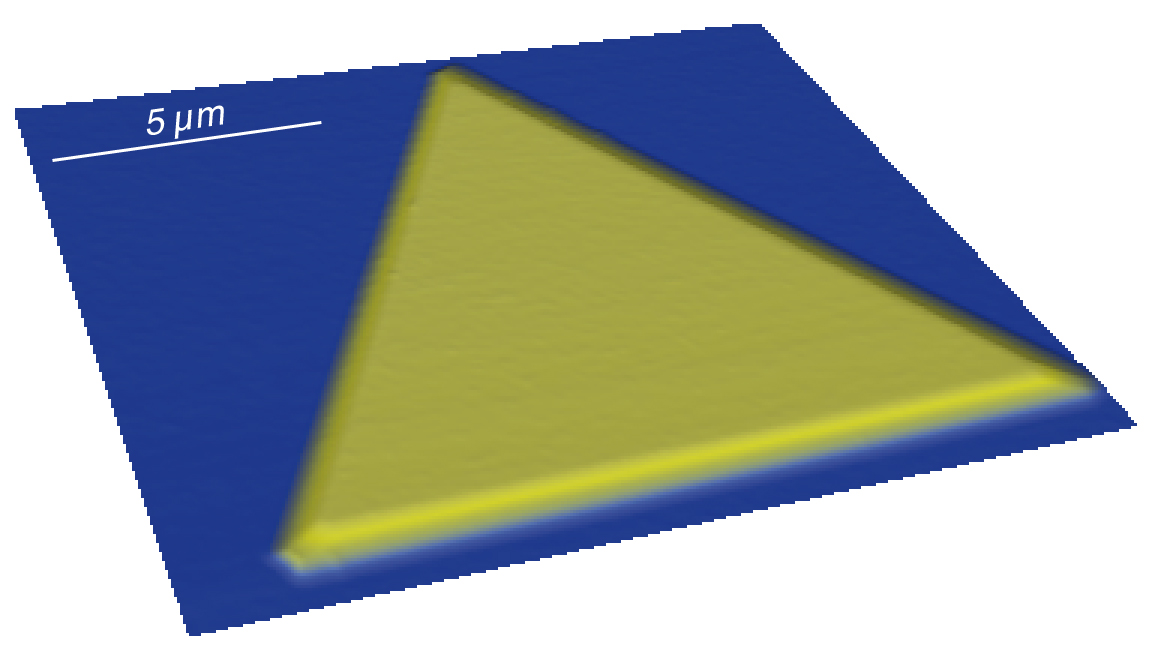Method Development
Our goal is to understand and predict TERS spectra by describing surface-immobilized molecules in the vicinity of plasmonic metal nanoparticles using computational quantum chemistry and classical electrodynamics. Combined, these theoretical methods shall deliver an explanation for specific Raman signatures of surface-immobilized molecules and a prediction for the limits of the lateral resolution under TERS conditions.
 |
Upright TERS using an inverted microscope setupThe optimal geometry for TERS is in general a setup that illuminates the plasmonic tip via a high NA objective, preferably an immersion oil objective, and collects the scattered signal via the same path. Obviously this will not work with opaque specimen. In a close collaboration with JPK we developed and tested a system that allows a quick adaption of a standard transmission TERS setup for opaque samples.1
|
 |
Ultraflat and transparent gold substratesAtomically flat gold surfaces are a preferred substrate when avoiding topographic artefact is a major task. Unfortunately, such gold films are usually opaque which is prohibitive to transmission TERS systems. We developed a chemical route towards ultraflat gold and silver flakes with a size between 5 - 10 µm that are only ~30 nm thin.2,3 Hence, while providing the desired properties regarding flatness and additional gap-mode enhancement, such gold flakes are still transparent. Consequently, utilising such substrates for transmission TERS (and other) setups is straight forward and enables particularly the already mentioned additional enhancement of the signal via the gap-mode between nano particle and metallic substrate.4,5
|
References
- T. Deckert-Gaudig, M. Richter, D. Knebel, T. Jähnke, T. Jankowski, E. Stock, V. Deckert,
A Modified Transmission Tip-Enhanced Raman Scattering (TERS) Setup Provides Access to Opaque Samples. Appl. Spectrosc, 2014, 68, 8, 916.
- T. Deckert-Gaudig, V. Deckert,
Ultraflat Transparent Gold Nanoplates—Ideal Substrates for Tip-Enhanced Raman Scattering Experiments. Small, 2009, 5, 4, 432.
- T. Deckert-Gaudig, E. Erver, V. Deckert,
Transparent Silver Microcrystals: Synthesis and Application for Nanoscale Analysis. Langmuir, 2009, 25, 8, 6032.
- T. Deckert-Gaudig, E. Rauls, V. Deckert,
Aromatic Amino Acid Monolayers Sandwiched between Gold and Silver: A Combined Tip-Enhanced Raman and Theoretical Approach. J. Phys. Chem. C, 2010, 114, 16, 7412.
- T. Deckert-Gaudig, E. Bailo, V. Deckert,
Tip-enhanced Raman scattering (TERS) of oxidised glutathione on an ultraflat gold nanoplate. Phys. Chem. Chem. Phys., 2009, 11, 34, 7360.

